A complete travel guide to visiting the Blue Mountains in NSW
Some of the best places in the world are on our doorstep, and now that NSW will be open to travel again – there’s one place you should visit first.
Right on the edge of Sydney, soaring towards the clouds, is one million hectares of Australia’s most ruggedly beautiful landscape.
The Blue Mountains, with its tall cliffs and deep valleys, dense bushland and charming towns, is internationally famous and doesn’t normally struggle to attract visitors. (Even Wills and Kate, the Duke and Duchess of Cambridge visited during their 2014 tour.)

But the region has had a pretty devastating start to 2020.
The World Heritage-listed region, no stranger to the horrors of bushfire season, suffered earlier this year with 19 homes lost and 70 damaged and fears 80 per cent of the protected area was burnt.
But after rains fell across the ranges and visitors started to make a return, the Blue Mountains – along with the rest of the world – was blindsided by the COVID-19 pandemic, eliminating domestic and international tourists to the region.
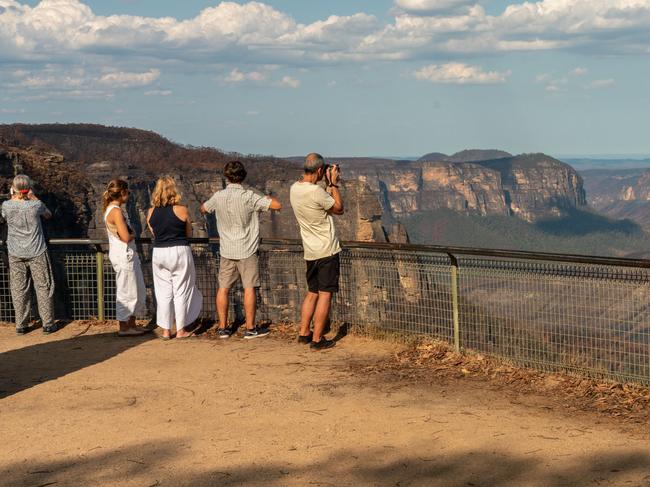
The good news is that with the fires extinguished and the region looking greener than ever, the Blue Mountains is now back in business at arguably the best time of year.
NSW Premier Gladys Berejiklian announced travel around the state of NSW will be on the cards from June 1, opening up the mountains to anyone from across the country to visit during the autumn and winter months.
Whether you’re day tripping from Sydney by car or train, or planning a longer stay, these Blue Mountains’ towns are ready for your visit.
LEURA
A 90-minute drive along the Great Western Highway from Sydney is the charming mountains village of Leura.
The town wasn’t damaged by the bushfires but battled the impact earlier this year as tourist numbers dropped off.
Chic and elegant, Leura is known for its Edwardian architecture, English-style gardens and pretty tree-lined streets with plenty of places to eat and shop.
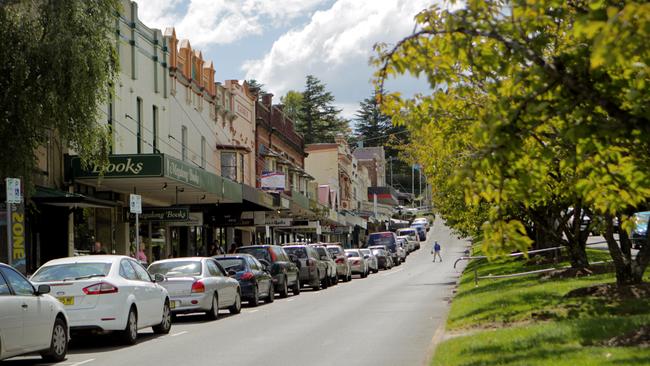
Stop for a coffee or a feed in the courtyard at Lily’s Pad Cafe, or take in a slightly fancier meal at cosy Silk’s Brasserie, which hopes to reopen its doors soon. Trendy Leura Garage is an award-winning restaurant, cafe and bar located in a former mechanic’s shop and has a focus on local food and wine.
When it reopens, the Bygone Beautys Treasured Teapot Museum & Tearooms, which is home the world’s largest private collection of tea wares, is a must-see. You should also stock up on scented candles, homewares and other gifts at Moontree, which is still open.
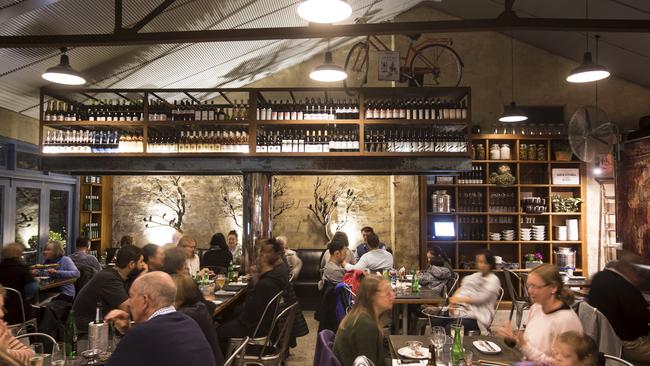
No visit to Leura is complete without a stop at The Candy Store, which sells local and imported confectionary, including all your favourite childhood lollies.
A few minutes from Leura is some of the Blue Mountains’ best attractions — the spectacular Wentworth Falls, and nearby Empress Falls.
The rustic but beautiful Old Leura Dairy is a fantastic place to stay in town, as well as the elegant Fairmont Resort and Spa, which has stunning views from its spot on the edge of the Jamison Valley, and is keen to reopen to guests soon.
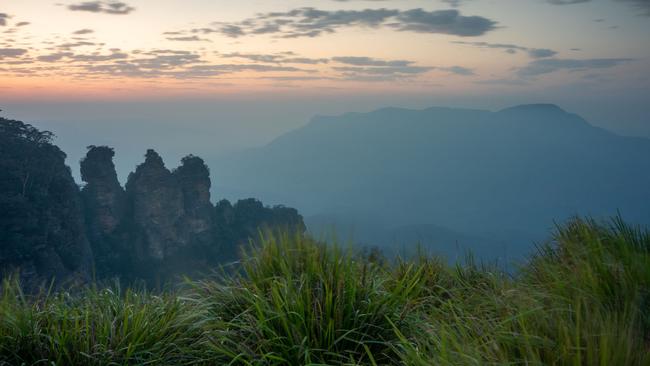
KATOOMBA
Just next door to Leura is the Blue Mountains’ biggest and most visited town, Katoomba.
Home to the region’s famous sight — the iconic Three Sisters rock formation — and plenty of other jaw-dropping views, Katoomba also boasts a vibrant and eclectic town centre.
It, too, has been quiet since the bushfires and throughout the COVID-19 pandemic. The iconic local attraction Scenic World, which was shut down for several days as a precaution in December, had 50,000 fewer visitors that month compared to December 2018.
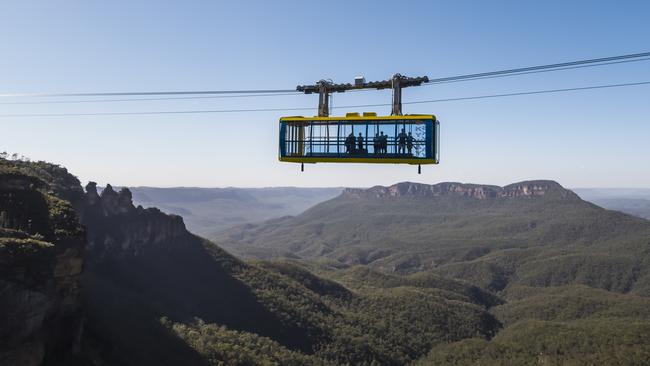
But Scenic World was unaffected by the fire and the Scenic Railway, Scenic Cableway and Scenic Skyway — which offers incredible views of Katoomba Falls, the Three Sisters and Jamison Valley — are a great way to spend a Blue Mountains visit when they reopen after coronavirus restrictions.
Other great places to visit are Echo Point lookout overlooking the Three Sisters, the scenic spot Nellie’s Glen, and a huge variety of local bushwalks and hikes. (The NSW National Parks site has updated information on what’s open or still closed across the Blue Mountains.)

Take in the amazing views of Echo Point over a drink at Bar NSW at The Lookout when it reopens, and for a memorable meal, check out 8 Things on Katoomba St, which serves eight authentic dishes from around the world created daily.
For a really special dining experience, splash out at Darley’s Restaurant at the heritage-listed Lilianfels property.
Katoomba is also a great place to shop for all kinds of kooky curiosities. Local favourites include Odd Mountain Oddities and the Katoomba Antique Centre.
If you’re staying in town, you can’t beat The Carrington Hotel, a gorgeous property that’s been around since the 19th century. At the very least, pop in for a cocktail or beer.
Or head over to the Mountain Culture Beer Company, housed in what used to be an old video store in the main street, for a local brew.
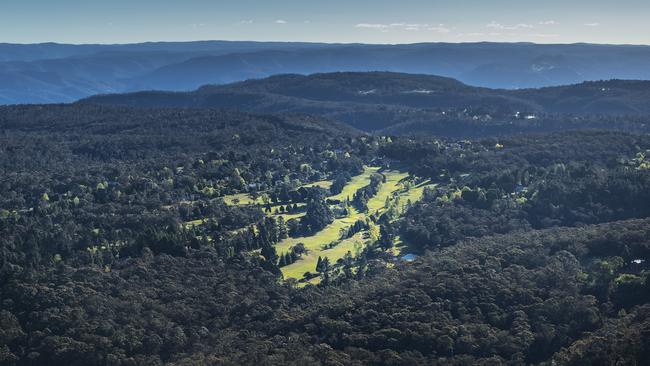
BLACKHEATH
A little further along the Great Western Highway is Blackheath — the highest village in the Blue Mountains, and one of its most dramatically beautiful locations.
Some points of interest around the town will be ready for visitors again from June 1.
Those spots include Govetts Leap lookout, Evans lookout and Fairfax Track. The Blue Mountains Heritage Centre, a wealth of information about the region and its long history, is currently closed but should be back when government restrictions ease.
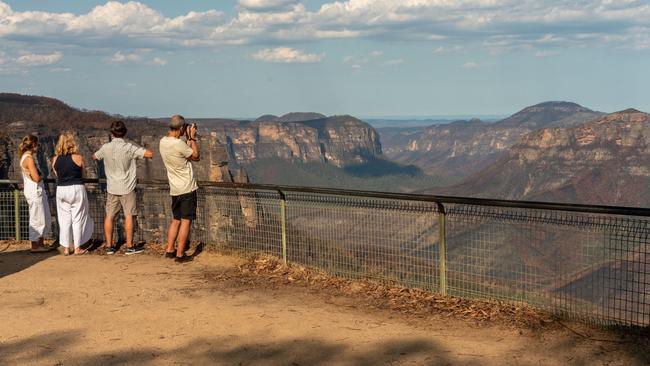
Another local gem that’s back in action in Blackheath is the spectacular Campbell Rhododendron Gardens, just outside the town centre.
Covering 18.5 hectares of mountain bushland, the gardens boasts exotic plants like rhododendrons, azaleas and maples, as well as natives. About one third of the gardens was destroyed by bushfire but there are big plans for restoration. The gardens have reopened and visitors are welcome now.
The gardens are gorgeous all year round, with each season offering something different. Right now is the best time for deciduous trees and camellias.
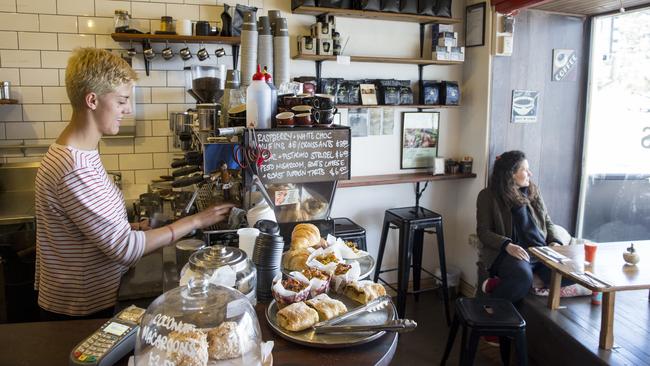
While you’re in Blackheath, sample the fantastic coffee at Anonymous Cafe and hunt for treasures at the Victory Theatre Antique Centre — billed as the largest antiques centre west of Sydney. The centre is temporarily closed but keen to return soon. If you’re in town on the second Sunday of the month, you’ll be able to catch the Blackheath Growers Market when they return.
Five minutes from Blackheath by car is the spectacular Hydro Majestic hotel at Medlow Bath, which overlooks the stunning Megalong Valley. It’s a sensational place to stay in the Blue Mountains — or even to just take in the view.
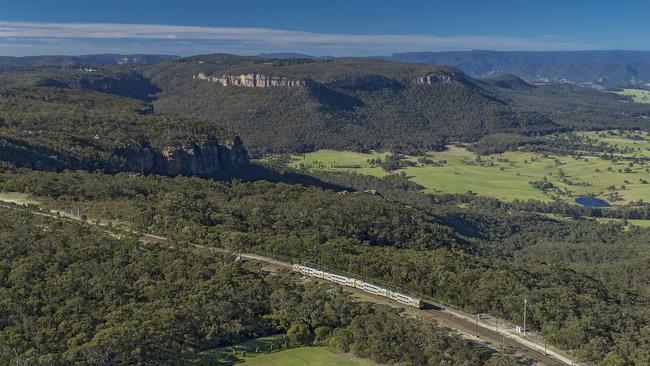
MOUNT VICTORIA
The township of Mount Victoria is a Blue Mountains’ gem – even the train station is a jewel from an elegant past.
The westernmost town in the Blue Mountains, Mt Victoria is still just a two-hour drive from the Sydney CBD, or 2.5 hours by train from Central station — but it feels like a world away.
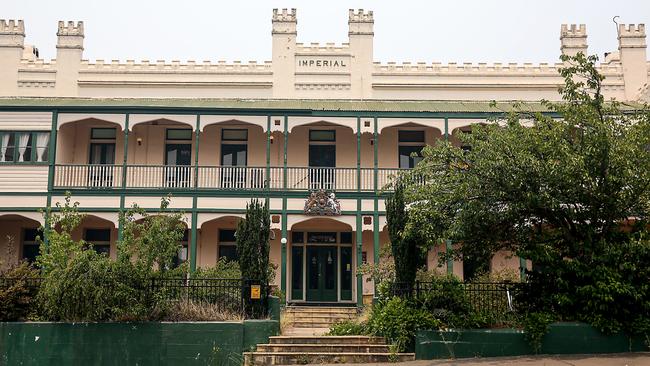
It’s packed with incredible historic buildings, from the 150-year-old sandstone railway station to the incredible Gatekeepers Cottage, which dates back to a time when passing horse-drawn coaches had to pay a toll.
Sadly, one of the town’s landmark buildings the old Imperial Hotel is closed but there are plans for redevelopment and you can visit the old grottoes, which once housed a zoo belonging to the hotel.
The Mount Victoria Historical Museum is a great way to take in the fascinating local history.
There are lots of local drives and walks to explore the natural terrain and take in the amazing views. One of the best, Victoria Falls Lookout, has been reopened since the bushfires.
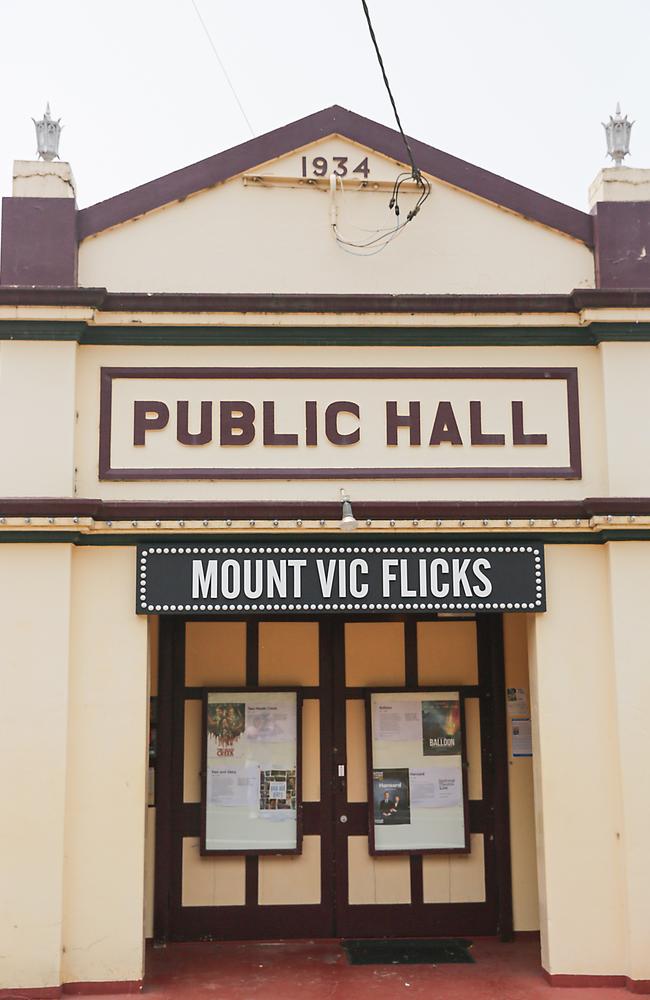
And there’s heaps to do in town, too. The Blue Mountains’ most iconic cinema, Mount Vic Flicks, screens art house movies and there are homemade snacks — including warming bowls of soup in the winter months. It hopes to reopen soon.
For shopping, there are great spots like Cobweb Collectables, which is full of interesting treasures, and Mount Vic and Me, an art studio that also sells funky souvenirs.
Hungry? Tuck into some modern Australian dishes using seasonal ingredients at Ambermere Inn, along with a glass of wine or craft beer, when it’s back up and running. If you’re after something sweet, there are great scones with jam and cream at Petalura Eatery. Even the local Caltex service station is famous for its old-style Aussie hamburgers.
There are lots of places to stay locally including the historic Victoria and Albert Guesthouse, which had all its bookings cancelled due to the bushfires.
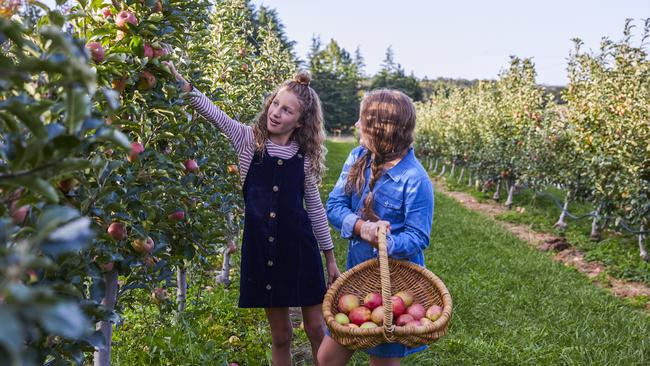
BILPIN AND MOUNT TOMAH
Bilpin and neighbouring Mount Tomah were the scene of some of the most heartbreaking destruction of the summer’s bushfires.
Luckily for us, these two Blue Mountains gems along the Bells Line of Road are back in business and eager for visitors when travel allows again on June 1 when the region is looking its best.
Bilpin is known as the “land of the mountain apple” and so much good stuff to see and do — and eat and drink, of course — are based on the humble fruit.
The Bilpin Fruit Bowl farm has just opened its doors for Pink Lady apple picking, which will be a huge boost for the farm as it sadly lost 6000 apple trees in the Bilpin fires.
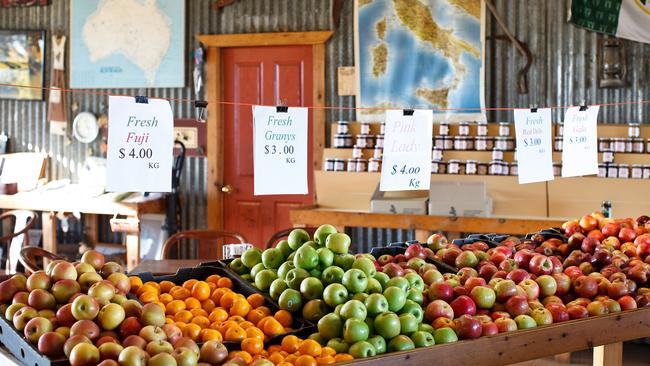
This is of course the birthplace of the famous Bilpin Cider Co. and a visit to its Cellar Door is a non-negotiable. The equally famous Hillbilly Cider company is also from Bilpin and has a Shed Door that’s another must visit.
If you enjoy your apples baked into a pie — and who doesn’t? — be sure to call into the Bilpin Apple Pie Cottage Orchard cafe.
Also open after the bushfires is the sensational Blue Mountains Botanic Gardens at Mount Tomah, which has great walking trails, excellent food at the garden restaurant Potager, and lovely cottages to stay the night.

And in very exciting news for the region, the famous glow worms and fireflies at the Blue Mountains Glow Worm Canyon survived the bushfires and will be very keen for visitors on night-time tours when the canyon reopens after COVID-19 restrictions.
If you’re looking for something adventurous, Bilpin Moto Adventures has purpose-built motorcycle trails and training for beginners. For something at a calmer pace, visitors can go picking for peaches, plums and sunflowers at Pine Crest Orchard. There’s no entry fee: you just pay for the weight of what you pick.

